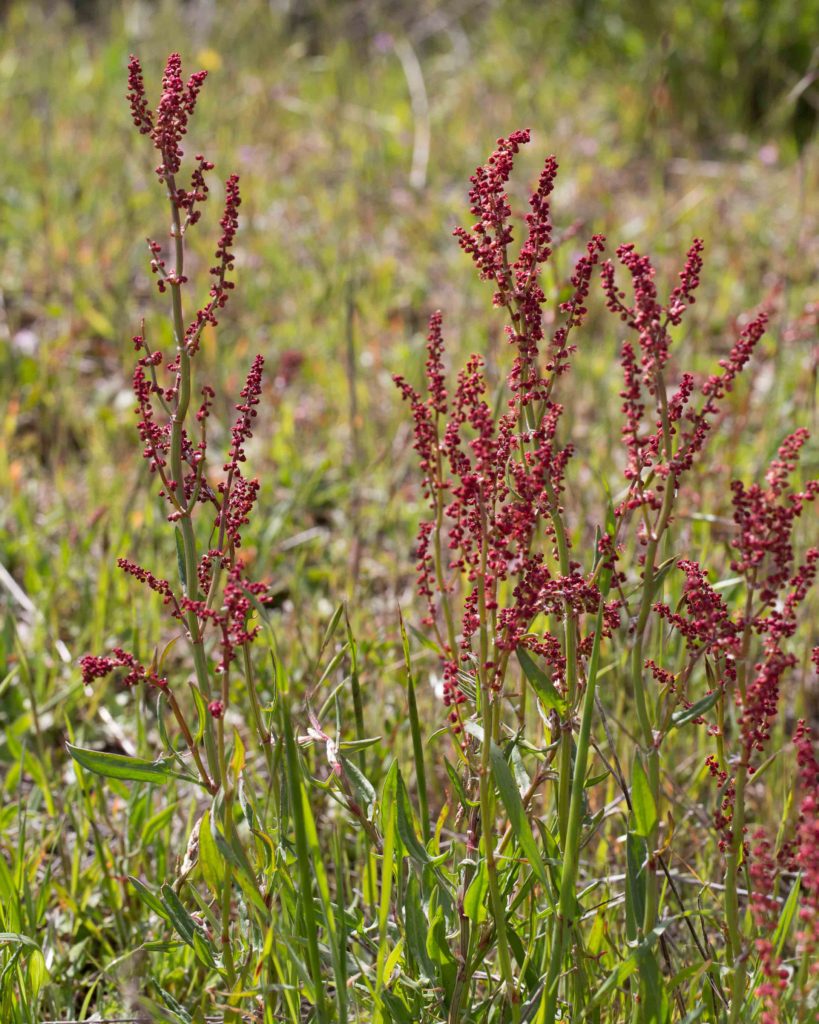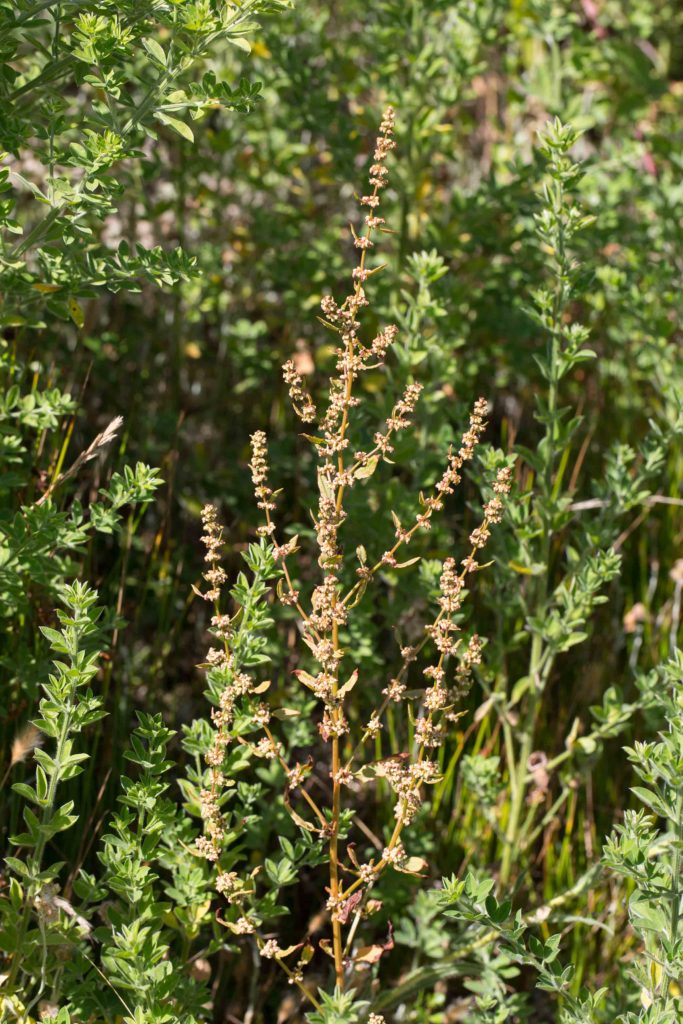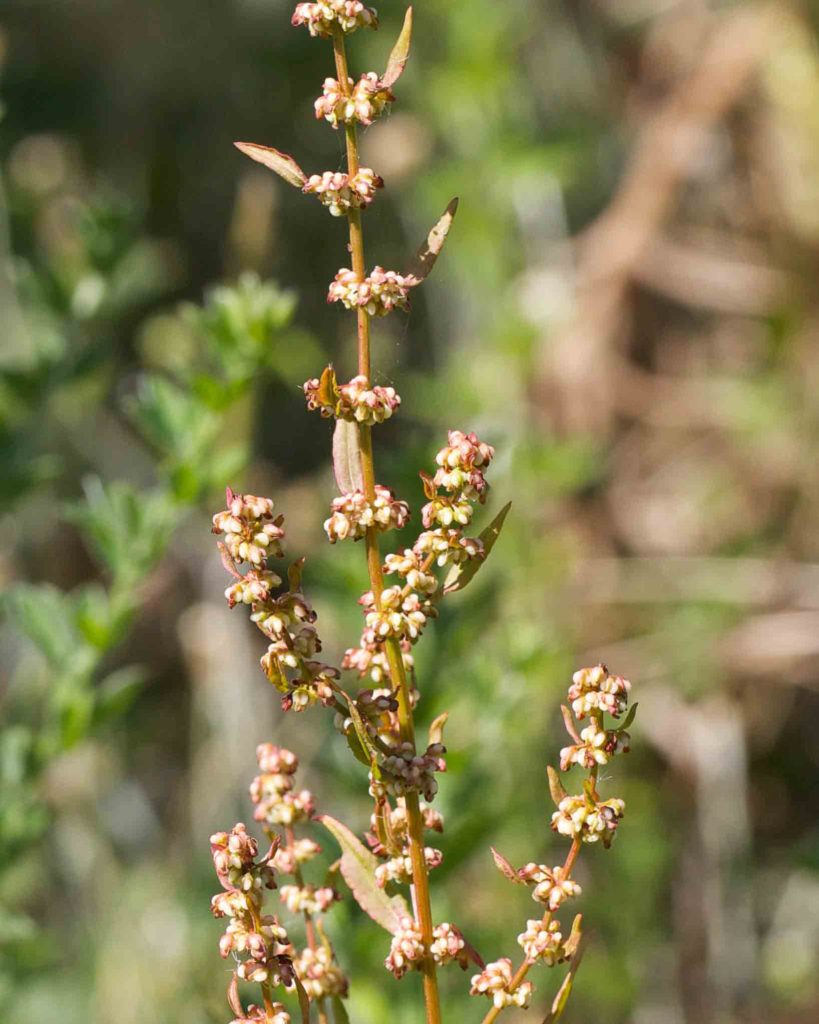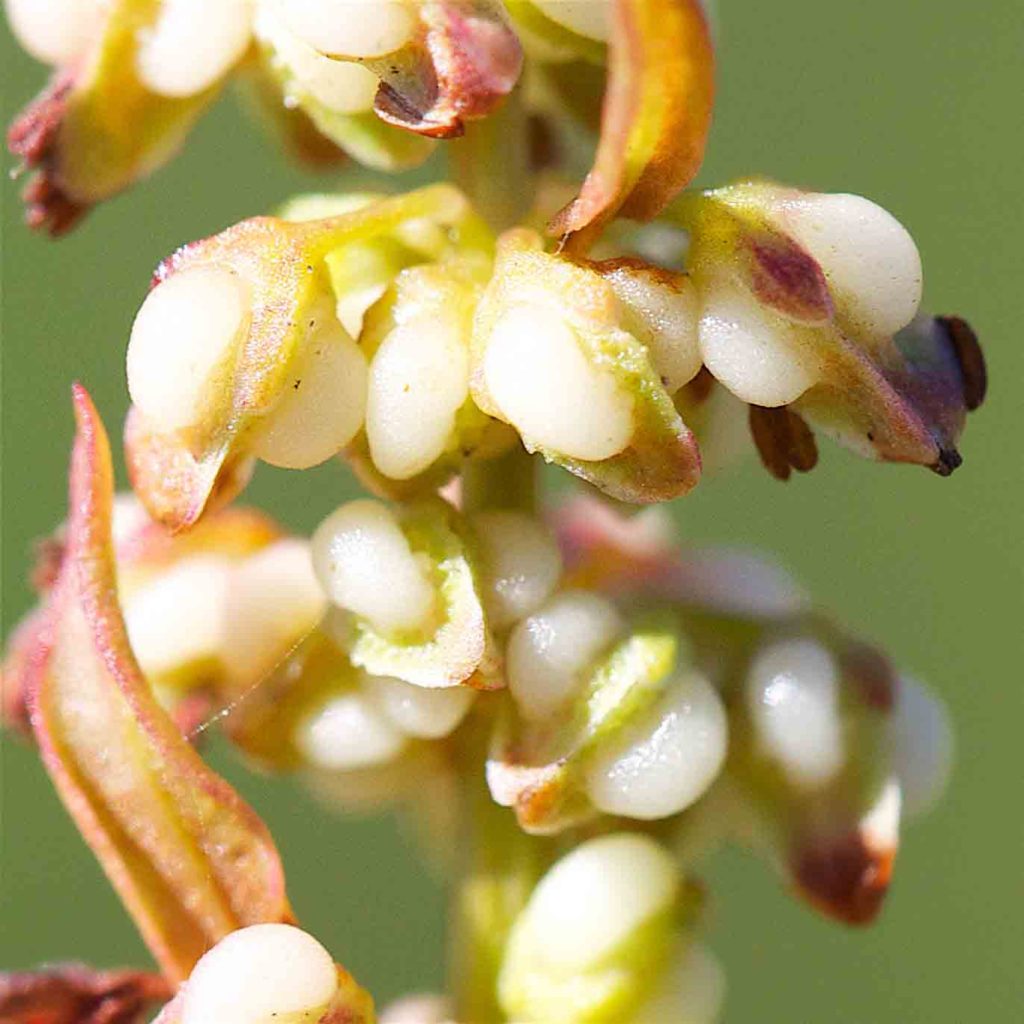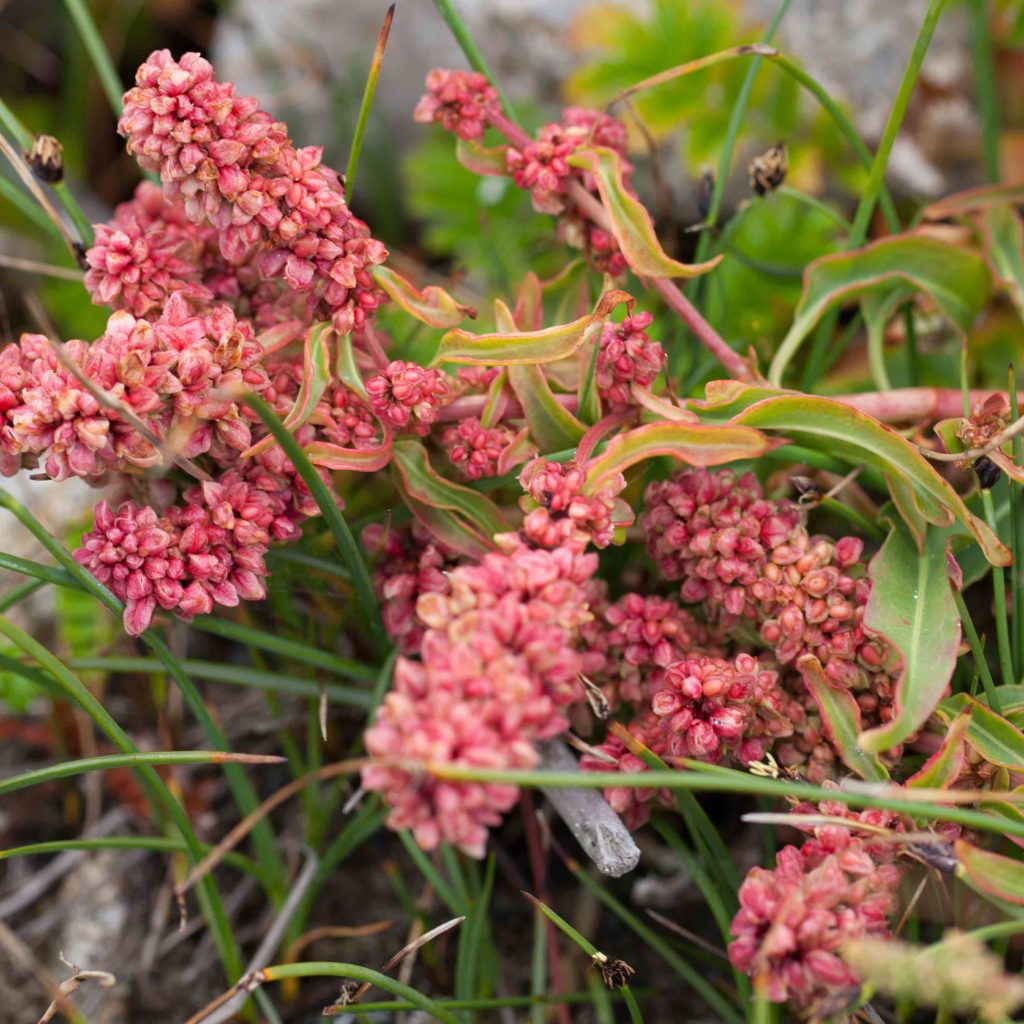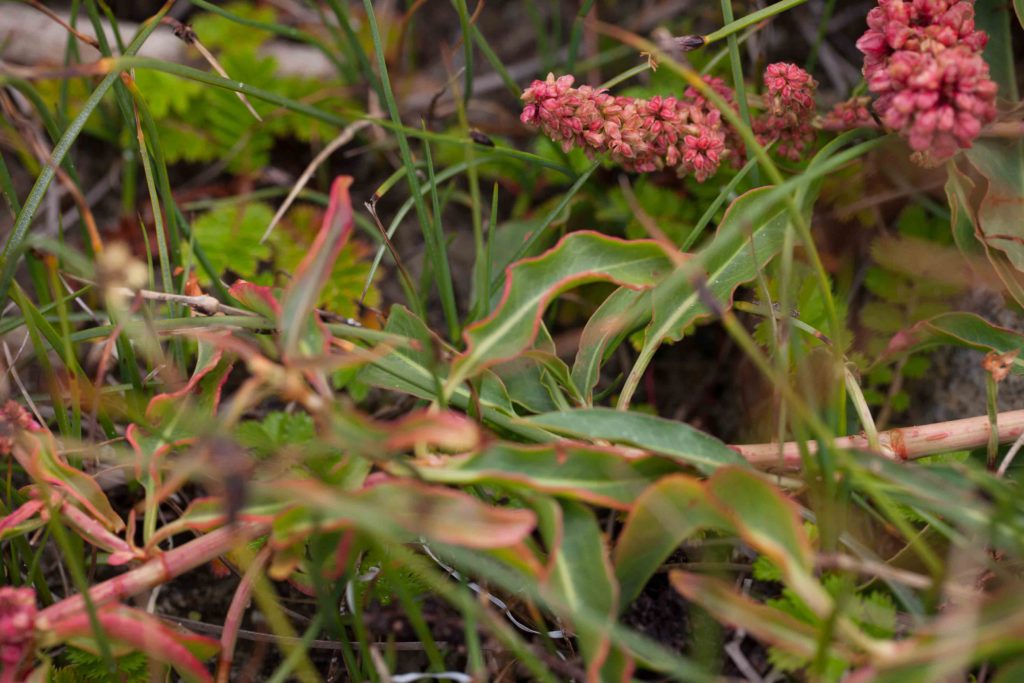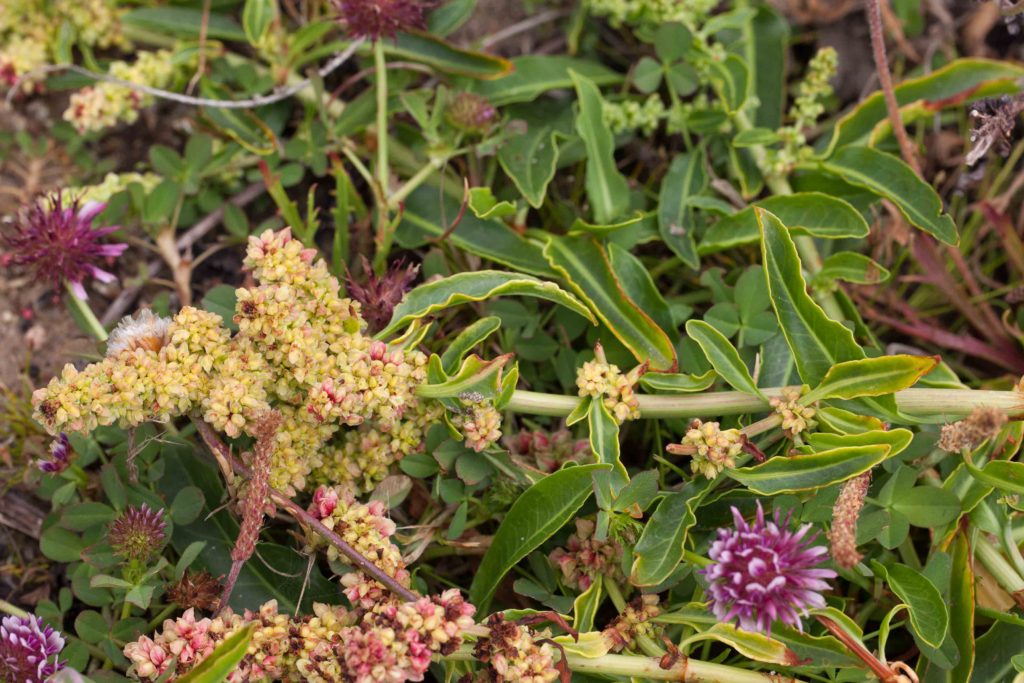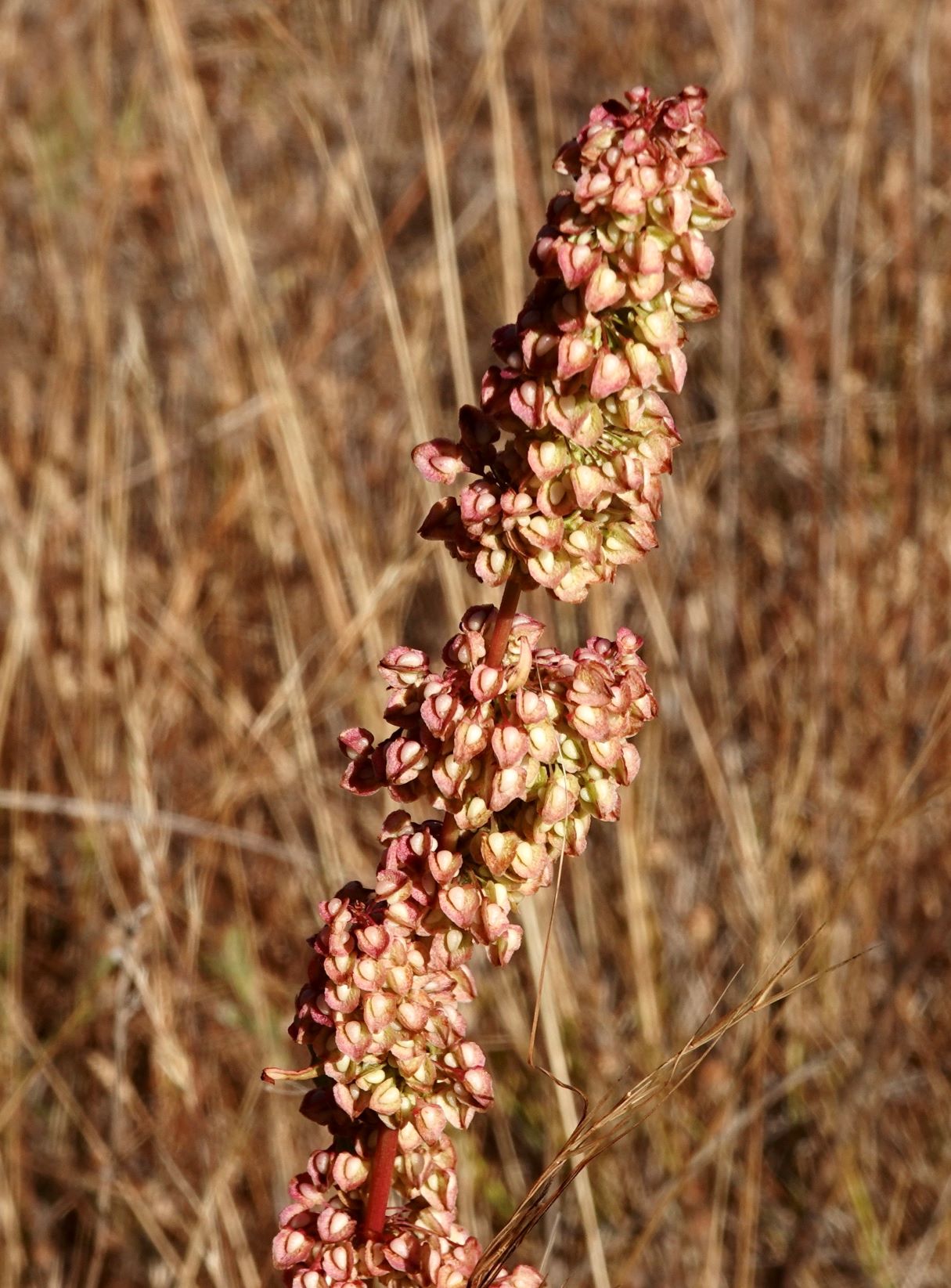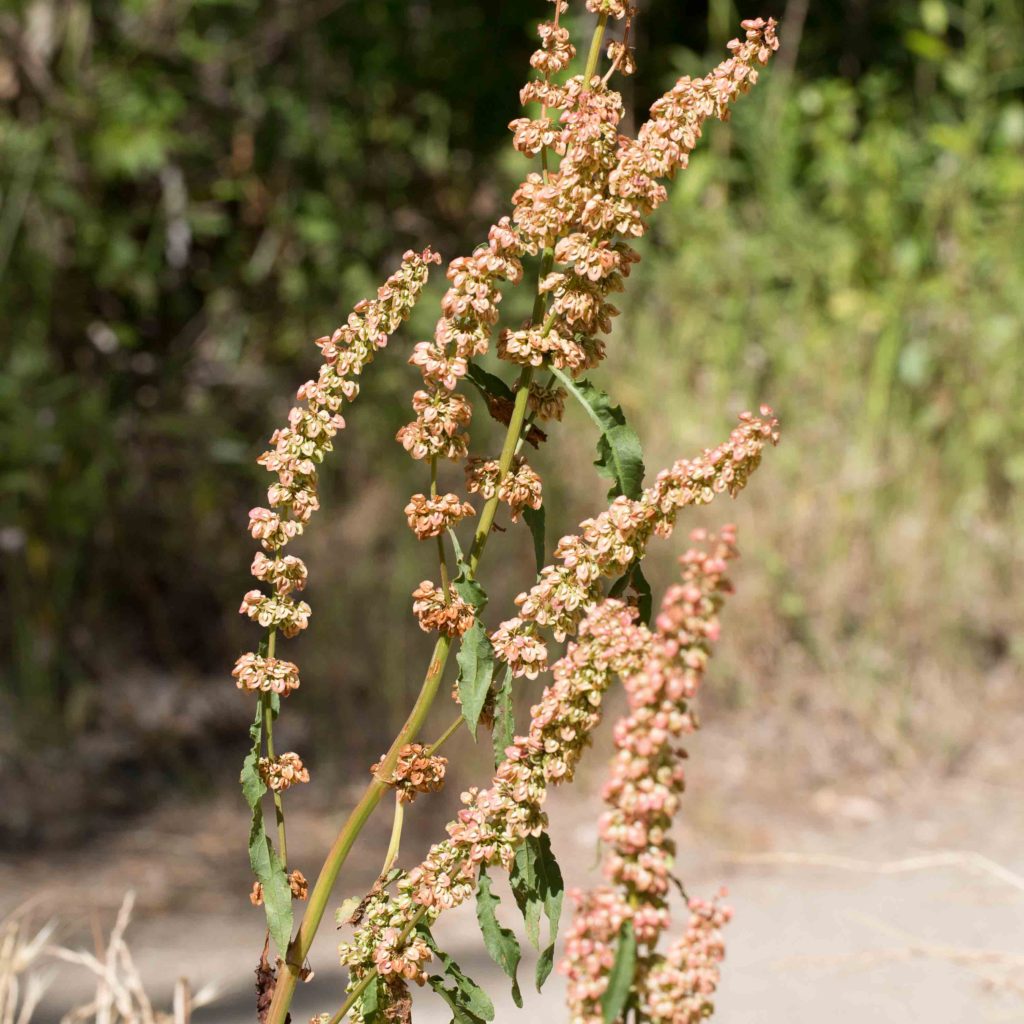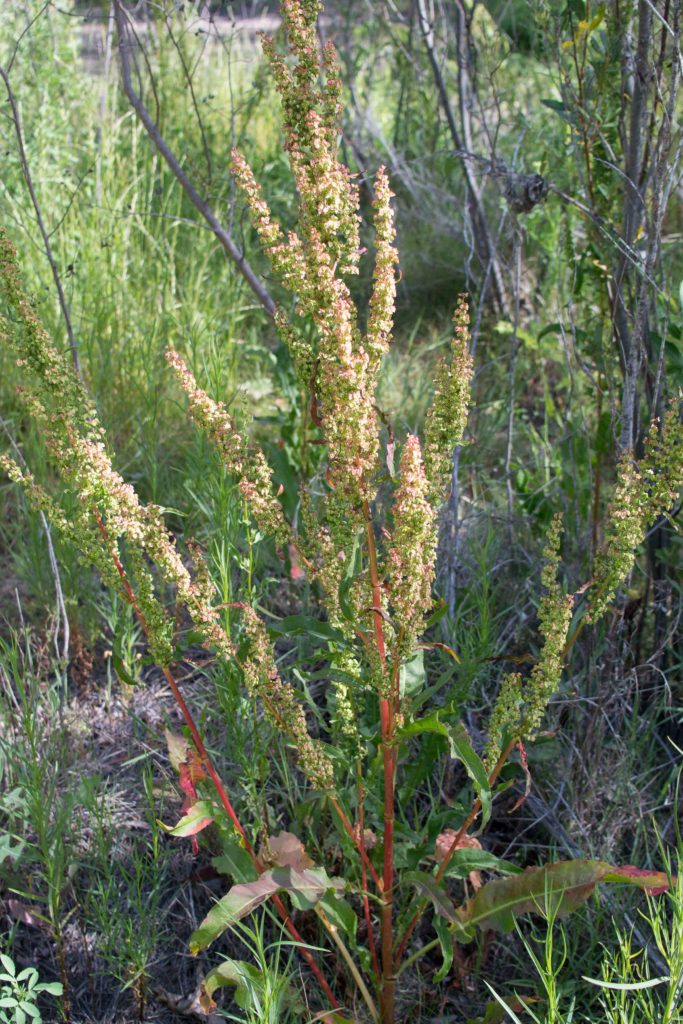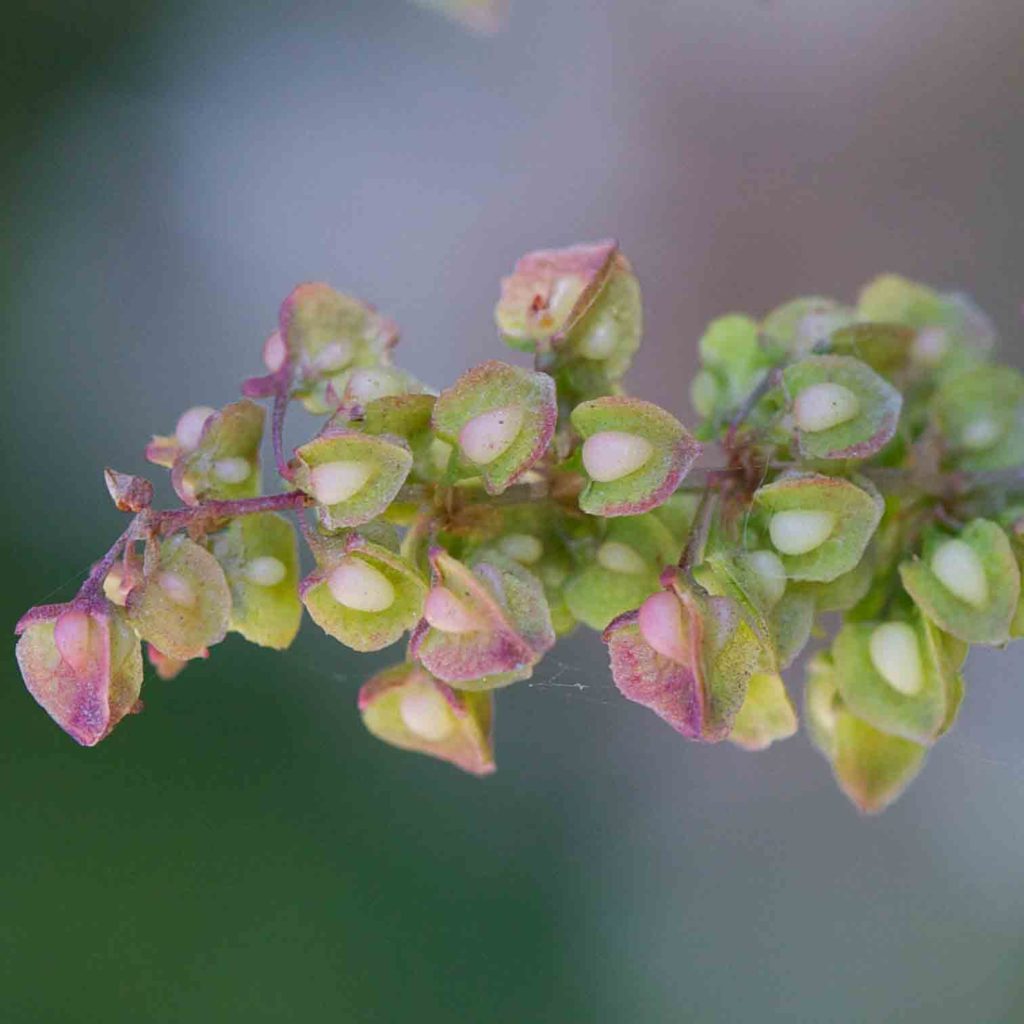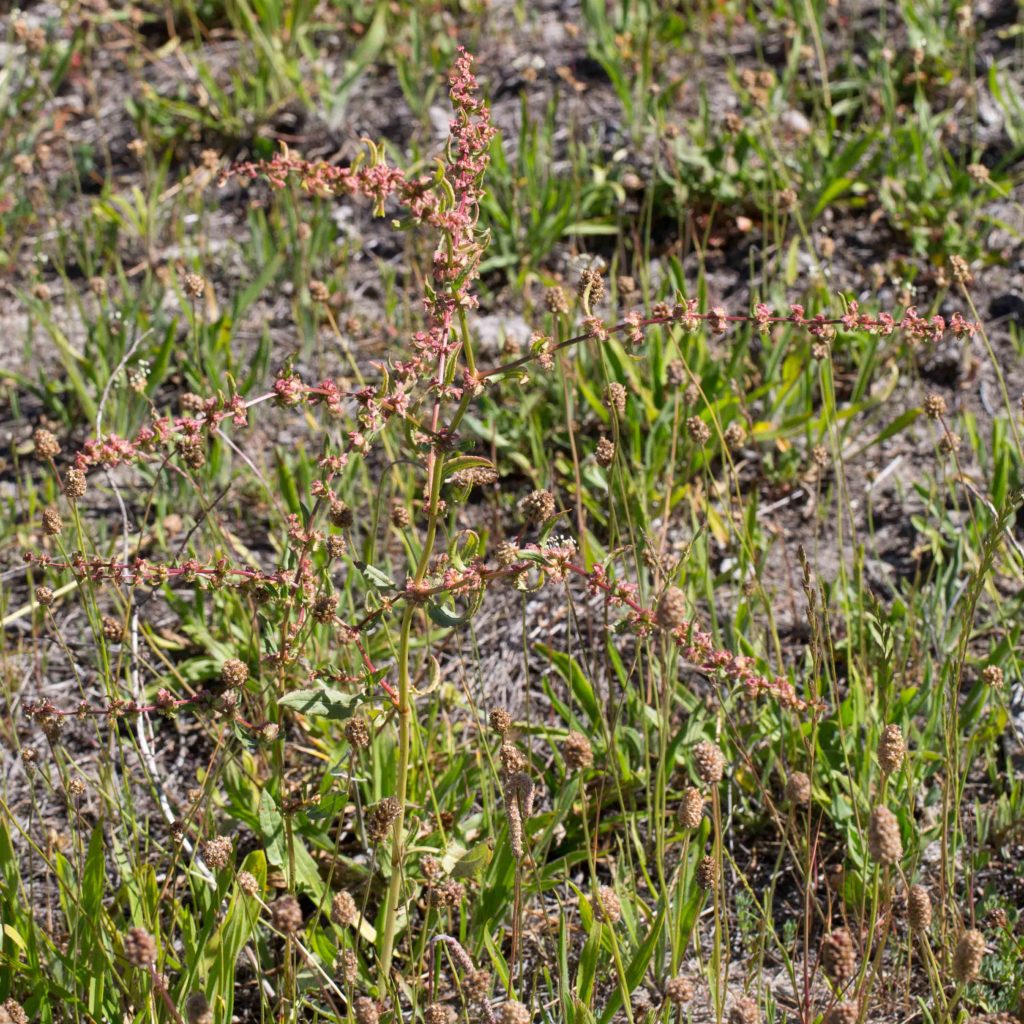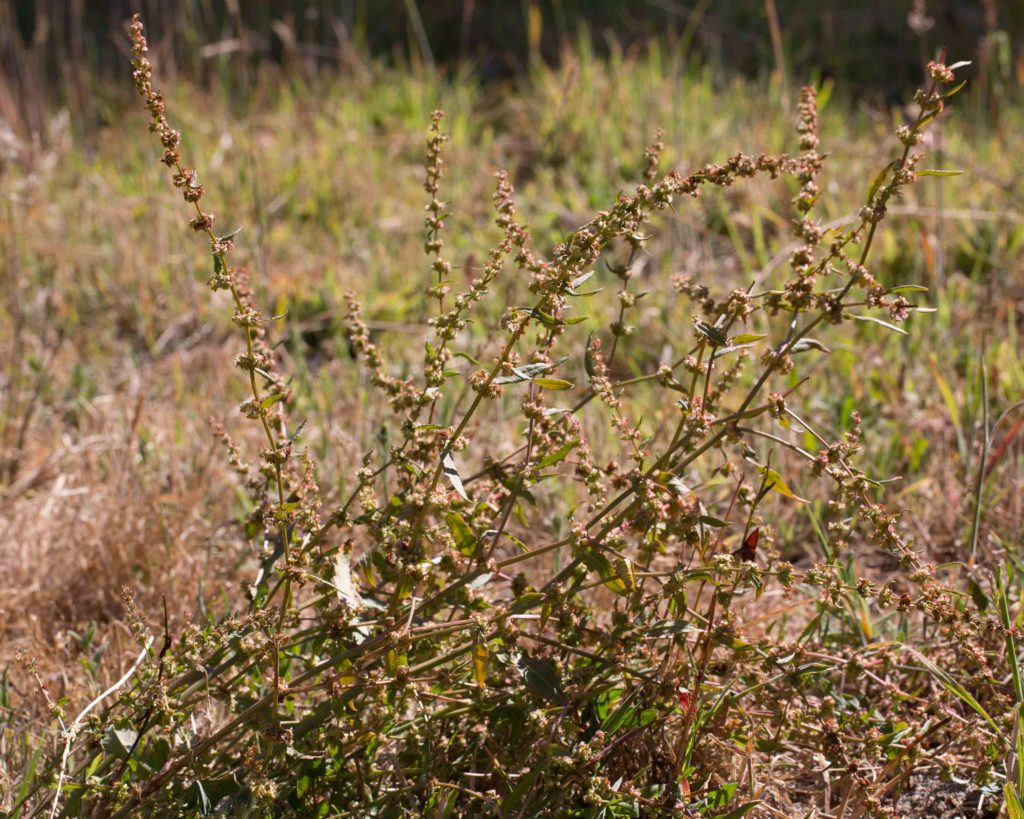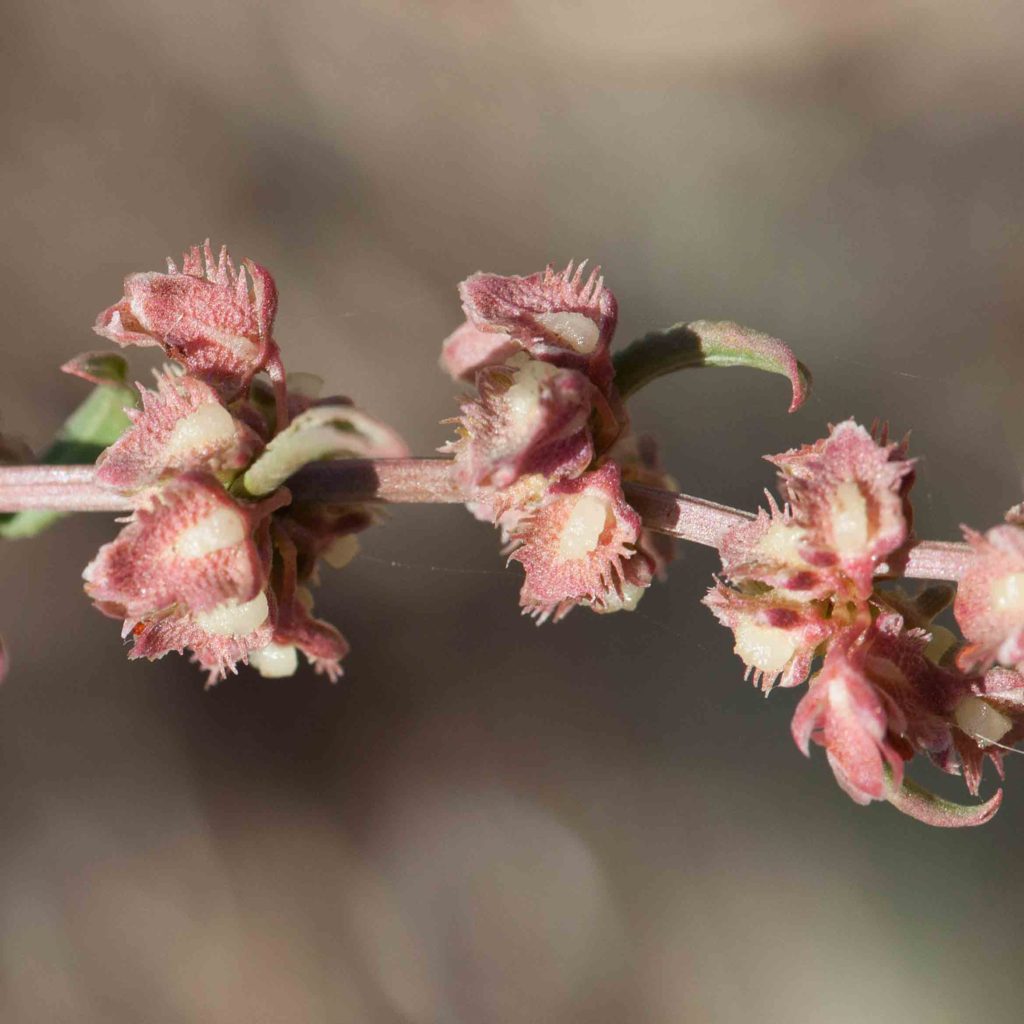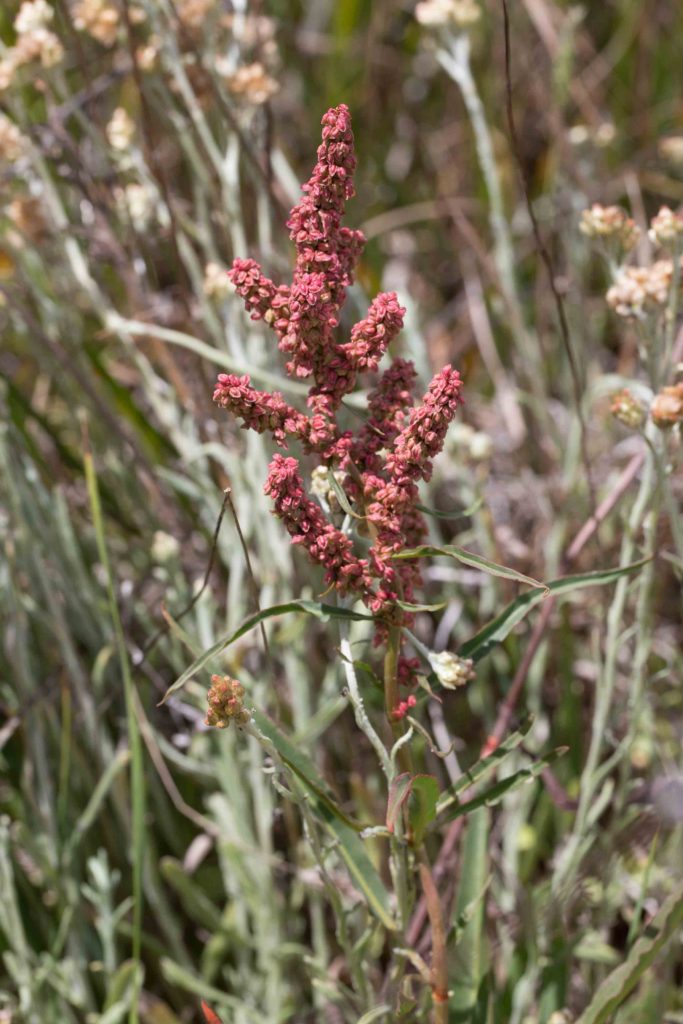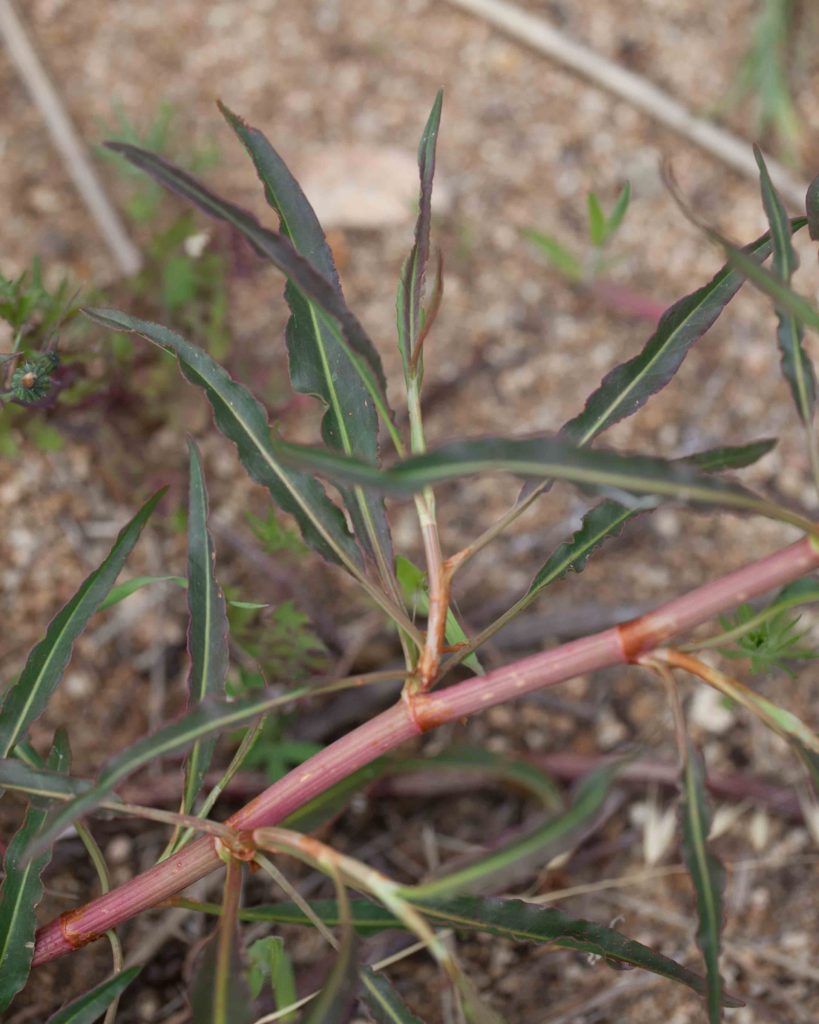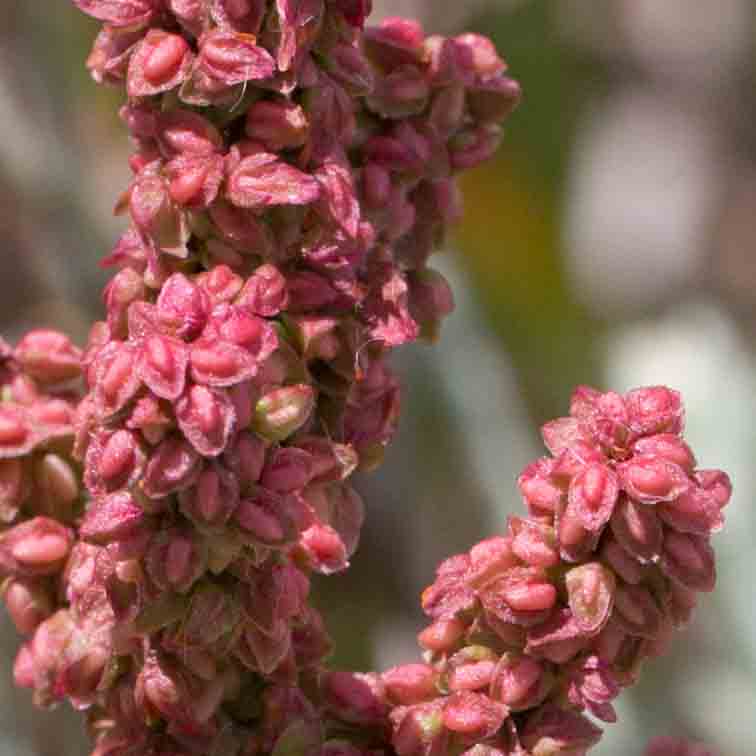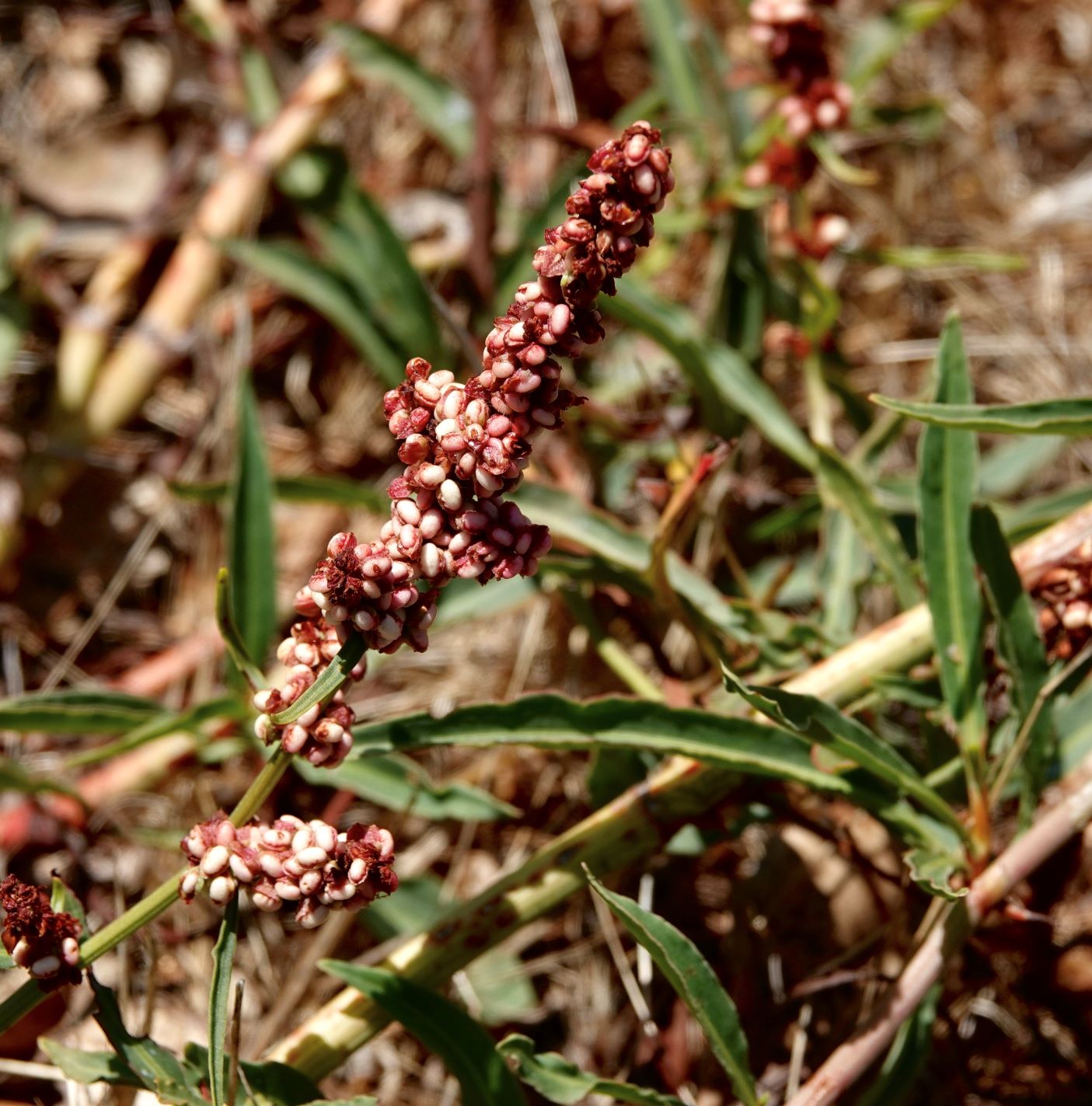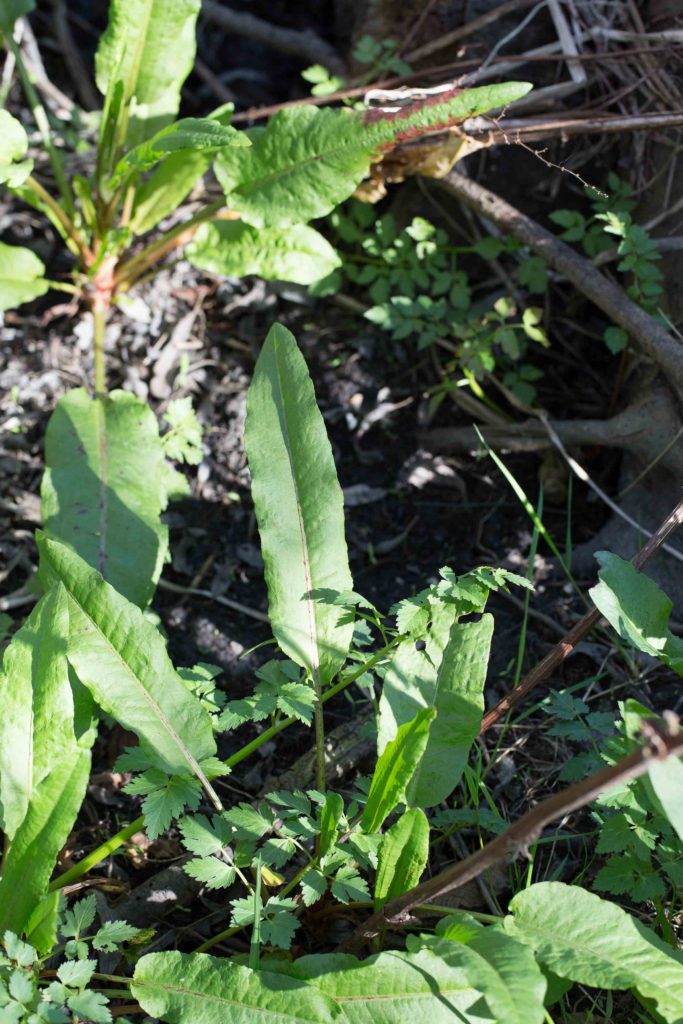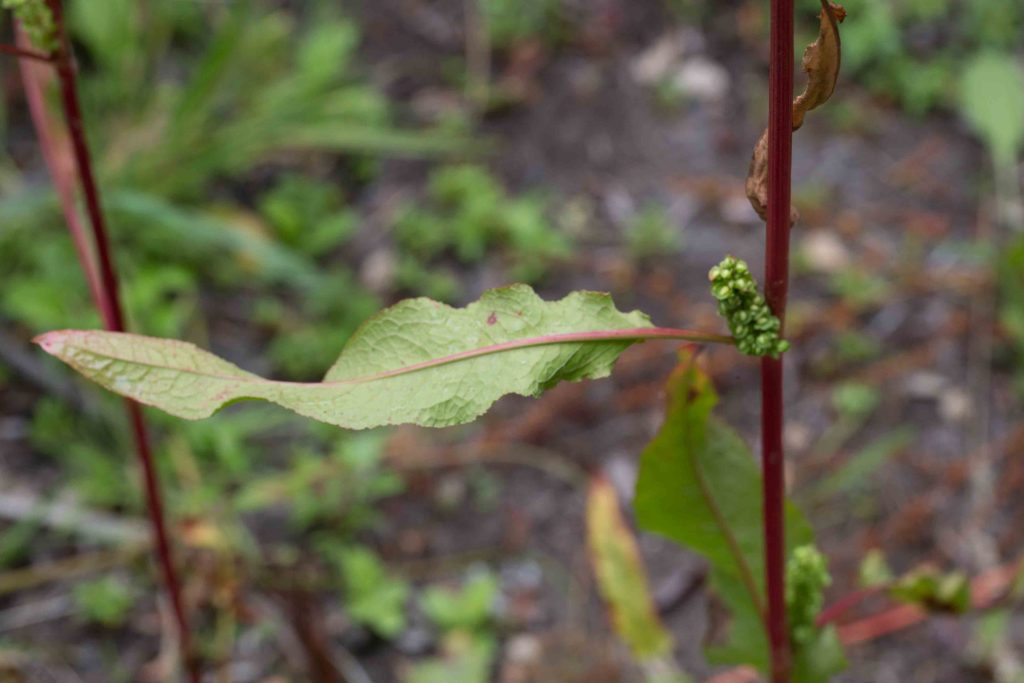Polygonaceae: Knotweed Family — Rumex (Dock)
Flowers in this family do not have separate petals and sepals. For plants like this, the term “perianth” is used to describe the flower (i.e. the calyx and the corolla together) and “perianth parts” to describe the individual elements. Docks are identified not by their inconspicuous flowers but by their leaves, their growth habit, and by what used to be described as “valves” but are now called “perianth lobes”. There are 6 perianth lobes, the outer 3 very small, the inner 3 larger and clearly visible. Callosities (small white lumps) may be present on one or more of these inner perianth lobes; their number and size are important diagnostic features. In some cases, it is impossible for the non-expert to identify species, without seeing the mature perianth and its callosities.
Sheep Sorrel– Rumex acetosella
Blooms:
Apr–July
Plant Height:
< 40 cm
Flower Size:
Very small
Origin:
Eurasia
Invasive?
Yes – moderate
Habitat:
Open grassland, disturbed places
Notes:
Despite its common name, this plant is urelated to the sorrels (Oxalis family), but closely related to the docks. Unlike the docks, it has small but rather beautiful flowers, which are red when new, then fade to brown as fruits develop. The plant is dioecious, with male and female flowers on separate plants. The leaf blades are mostly basal, and easily identified by their two backward-facing lobes.
Clustered / Green Dock – Rumex conglomeratus
Blooms:
May–Aug
Plant Height:
30–80 cm
Flower Size:
Small cluster
Origin:
Europe
Habitat:
Low moist places
Notes:
One of the more common docks, with leaves that are long and slender, reducing in size as they ascend the stem. The flowers are in small interrupted clusters, all but the uppermost with subtending leaves – an important diagnostic feature. Callosities are present on all of the inner perianth lobes, more or less equal in size and almost as wide as the lobes.
Coastal Willow Dock – Rumex crassus
Blooms:
Feb–July
Plant Height:
20–60 cm
Flower Size:
Large cluster
Origin:
Native
Habitat:
Coastal dunes & bluffs
Notes:
The stem of this dock is generally prostrate, with an ascending tip, unlike the generally erect Willow-leaved Dock (Rumex salicifolius, see below). Its leaves are also slightly shorter and wider, normally flat but may be wavy-edged. The inflorescence is generally dense. The inner perianth lobes are wide to narrowly ovate, rounded or truncate at the base. There is a single callosity, which may be about as wide as the lobe.
Curly Dock – Rumex crispus
Blooms:
All year
Plant Height:
40–100 cm
Flower Size:
Large cluster
Origin:
Eurasia
Invasive?
Yes – limited
Habitat:
Grassland and waste places
Notes:
A very common and invasive dock. The leaf edges are wavy. It has one or more dense inflorescences, which may hide the stem. The inner perianth lobes have smooth edges. Callosities are present on all of the inner perianth lobes, one being larger than the others, but all are less than 1/3 the width of the lobes. Photo #1 by CJH.
Fiddle Dock – Rumex pulcher
Blooms:
May–Sept
Plant Height:
20–60 cm
Flower Size:
Small cluster
Origin:
Mediterranean
Habitat:
Disturbed areas, grassland, dry or moist places
Notes:
This common dock is most easily recognized by its growth habit, with an erect stem and slender branches growing out at right angles. Callosities are present on each of the inner perianth lobes. The lobe margins are conspicuously toothed, each with 2–5+ teeth.
Willow-leaved Dock – Rumex salicifolius
Blooms:
May–July
Plant Height:
30–60 cm
Flower Size:
Large cluster
Origin:
Native
Habitat:
Moist places
Notes:
This has ascending to erect stems, with moderately dense inflorescences, that may be terminal or axillary. The leaves are long and slender, lanceolate to linear, 5–13 cm long and 1–2.5 cm wide. Leaf margins may be either flat or wavy. The inner perianth lobes are triangular, with the base either tapered or truncate. There is a single callosity, which can be about as wide as the lobe.
Willow Dock – Rumex transitorius
Blooms:
Apr–June
Plant Height:
25–70 cm
Flower Size:
Large cluster
Origin:
Native
Habitat:
Moist places, pond margins
Notes:
This is similar to Willow-leaved Dock (Rumex salicifolius, see above), but has stems that are decumbent to erect. Its leaves are slightly broader (6–15 cm long and 2–4 cm wide), usually with wavy margins. The inflorescence is dense, more interrupted towards the base, and without the subtending leaves found in the similar Clustered Dock (Rumex conglomeratus, see above). The inner perianth lobes are variable in shape. There are generally 3 callosities of varying sizes. Photo #1 by CJH.
